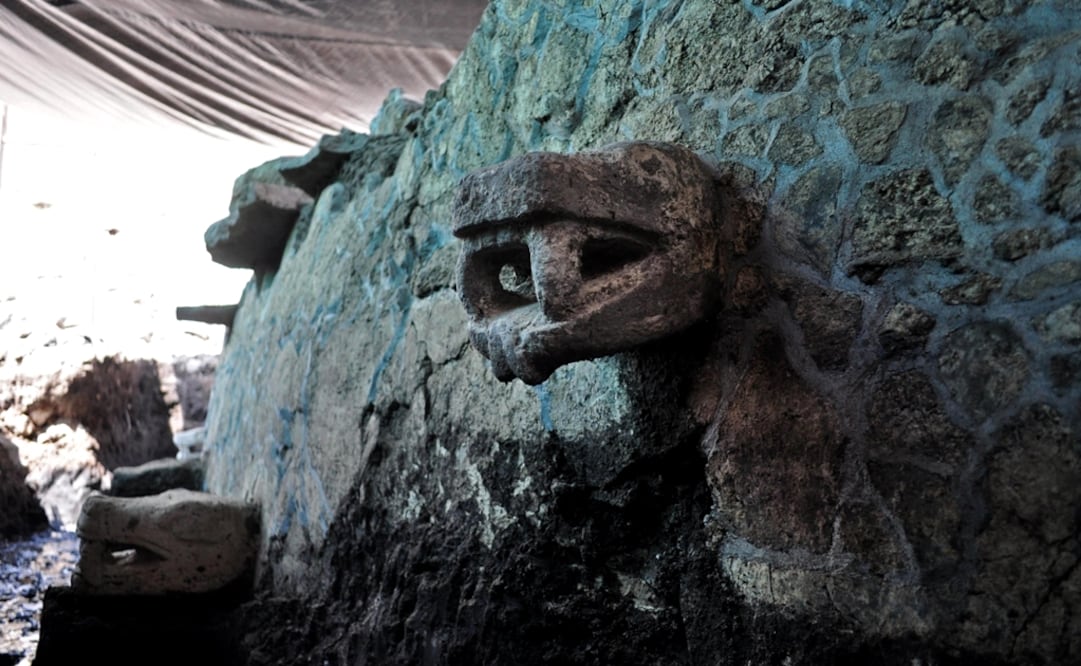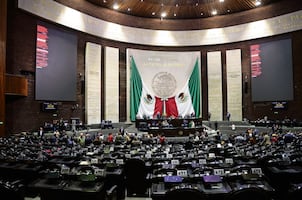Más Información

Segob: en administración de Trump retornaron más de 145 mil migrantes mexicanos; dan atención a connacionales con "México te abraza"

Alito Moreno afirma que México debe ser aliado de EU ante dictaduras como la de Maduro; "¡Venezuela libre ya!”
On March 14, 1519 , Hernán Cortés and his troops arrived in the majestic city of Tenochtitlan , the capital of the Aztec empire whose superior architecture and urban planning made the Spaniards doubt whether they should maintain its formidable buildings and broad canals or build a new city with a purely European style.
According to 16th century chronicles made by friars and Spanish soldiers, the territory that is now Mexico City was once perceived as the “Venice of America,” where the conquistadors found temples that were up to 40 meters tall (131.2ft), a height that was difficult to reach for a building at that time.
Spanish conquistador Bernal Díaz del Castillo
left a testimony of the Spaniards' first impression upon arriving at the magnificent city: "When we saw so many cities and villages built in the water and other great towns on dry land we were amazed and said that it was like the enchantments (...) on account of the great towers and cues and buildings rising from the water, and all built of masonry. And some of our soldiers even asked whether the things that we saw were not a dream? (...) I do not know how to describe it, seeing things as we did that had never been heard of or seen before, not even dreamed about."
“It must have been difficult to choose whether to destroy it or create something new. Hernán Cortés experienced a deep emotional conflict,” explained María Bustamante, an architect and chronicler from Mexico City .
In spite of this, the Spaniards soon realized that a city that based its urban planning on temples and sacred constructions while relegating more active spaces to the background could not meet the standards of a European city.
The fact that the city had been built on a bleak islet surrounded by lakes and wet areas was not convenient for them either. It was the opposite of what Europeans would have considered the birthplace of an empire.
The legend says the Aztecs (or ‘Mexicas’) decided to build the city in the middle of a lake because of an ancient prophecy: the wandering tribes would find the destined site for a great city whose location would be signaled by an eagle with a snake in its beak perched atop a cactus (Opuntia).
“They found a way to make the islet inhabitable and expand it through the years,”
Bustamante explained.
In only 200 years, the Mexicas built what became known as Tenochtitlan, a highly developed city that was quite unique in terms of urban development.
The city was divided into four zones or camps; each camp had its own ceremonial site and was in turn divided into 20 districts or calpullis.
The famous Greater Temple (“Templo Mayor”) was the main temple of the Mexica peoples and was located at the crossing between Tenochtitlan’s two main axes. The Mexicas also had irrigation ditches and a highly sophisticated hydraulic system.
The city’s inhabitants dominated the lakes surrounding the islets. Since some of them had saltwater and others had freshwater, the Mexicas had to prevent the saltwater from flooding the city while channeling freshwater for human consumption.
One may even go as far as to say that the Mexicas were the first urban planners with sustainability in mind.
This was one of the main developments that the Spanish conquistadors tried to replicate, along with the reticular urban layout based on the Aztec cosmogony and the city’s division into four zones.
“The Spaniards tried to take advantage of this while experimenting with a Renaissance urban layout that adapted to the European lifestyle, introducing yards, rooms, and a more massive style of building,” stated Jorge Pedro Uribe, a journalist and chronicler of Mexico City .
Furthermore, the Europeans benefited from the city’s orientation and large roads such as Tacuba and Tlalpan. Some of the water canals were even maintained until the middle of the 20th century, according to Martín Ríos, a professor and investigator from Mexico’s National Autonomous University (UNAM) .
In the next centuries, however, urban planners seem to have lost their grip on water control and knowledge. A series of bad decisions that aimed to place the city above its natural environment led to Mexico City’s current precarious situation regarding water. One of said decisions was to drain the lakes surrounding what is now known as Mexico City’s historic center .
“It was the worst decision but also a necessary one […] Once every decade, the city became flooded with up to three meters of water (nearly 10ft), making it a difficult place for people to live in,” Bustamante explained.
Ever since, the unevenness in Mexico City’s historic center, which has affected some ancient buildings over the years, has become a pressing issue. The city’s subsidence is a result of water extraction from deeper layers.
Each year, the area where Tenochtitlan once stood sinks by between four and five centimeters (1.5-1.9in). Some researchers assure that ever since the conquest in 1521, the ground level has shrunk by up to 40 meters (131.2ft) .
As a result of the ground movements, traces of pre-Hispanic buildings are constantly popping up among newer buildings in Mexico City’s historic center.
Five centuries after the Spanish conquest, Tenochtitlan is palpable in every nook of the city.
“Tenochtitlan is not as ravaged as we have been led to think, nor as underground as we once believed. It is very much near the surface and if we look closely, we can see traces of Tenochtitlan with just a little imagination and historic knowledge,” Uribe concluded.
dm
Noticias según tus intereses
[Publicidad]
[Publicidad]













